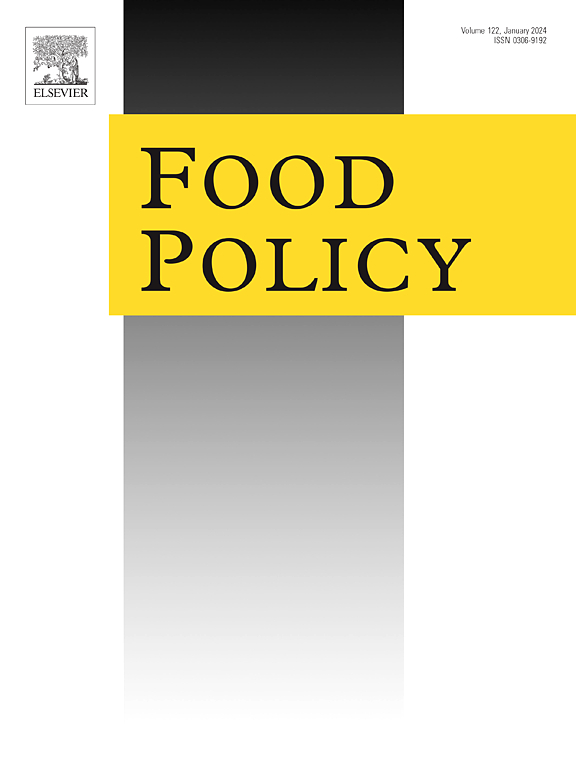Leveraging agricultural production organizations to reduce fertilizer use: Evidence from China
IF 6
1区 经济学
Q1 AGRICULTURAL ECONOMICS & POLICY
引用次数: 0
Abstract
Smallholder-dominated agriculture in China faces severe fertilizer overuse due to fragmented land, limited mechanization, and low adoption of advanced agricultural technologies. Agricultural production organizations (e.g., family farms, agricultural cooperatives, and agricultural enterprises), characterized by their relatively large scale and advanced agricultural practices, are considered potential solutions for promoting more sustainable practices. This study investigates whether and how different agricultural production organization forms are associated with fertilizer use in China. Linking detailed business registry data with county-level panel data, we find that agricultural enterprises and cooperatives are associated with reductions in fertilizer use at the county level, while family farms do not show a significant relationship. Agricultural mechanization and land consolidation are potential channels through which agricultural enterprises and cooperatives are linked to these reductions. Further analysis with household survey data suggests associations between these two types of organizations and reductions in smallholders’ fertilizer inputs through agricultural services. Heterogeneity analysis indicates that agricultural enterprises have a more pronounced effect in areas with extensive land transfer, advanced fertilization techniques, and in the eastern and plain regions of China. Agricultural cooperatives, benefiting from their unique governance structure, consistently show negative associations with fertilizer use regardless of land transfer, fertilization techniques, and topography constraints. Our findings provide insights into pathways for transitioning smallholder farming toward sustainable agriculture.
利用农业生产组织减少化肥使用:来自中国的证据
中国以小农为主导的农业由于土地分散、机械化程度有限和先进农业技术的低采用而面临严重的化肥过度使用问题。农业生产组织(如家庭农场、农业合作社和农业企业)的特点是规模相对较大和先进的农业做法,被认为是促进更可持续做法的潜在解决办法。本研究探讨了中国不同的农业生产组织形式是否与化肥使用相关,以及如何相关。将详细的商业登记数据与县级面板数据联系起来,我们发现农业企业和合作社与县级化肥使用量的减少有关,而家庭农场没有显示出显著的关系。农业机械化和土地整理是将农业企业和合作社与这些削减联系起来的潜在渠道。对住户调查数据的进一步分析表明,这两类组织与小农通过农业服务减少肥料投入之间存在关联。异质性分析表明,在土地流转广泛、施肥技术先进的地区、东部和平原地区,农业企业的影响更为显著。农业合作社受益于其独特的治理结构,无论土地流转、施肥技术和地形限制如何,其与化肥使用始终呈负相关。我们的研究结果为小农农业向可持续农业转型的途径提供了见解。
本文章由计算机程序翻译,如有差异,请以英文原文为准。
求助全文
约1分钟内获得全文
求助全文
来源期刊

Food Policy
管理科学-农业经济与政策
CiteScore
11.40
自引率
4.60%
发文量
128
审稿时长
62 days
期刊介绍:
Food Policy is a multidisciplinary journal publishing original research and novel evidence on issues in the formulation, implementation, and evaluation of policies for the food sector in developing, transition, and advanced economies.
Our main focus is on the economic and social aspect of food policy, and we prioritize empirical studies informing international food policy debates. Provided that articles make a clear and explicit contribution to food policy debates of international interest, we consider papers from any of the social sciences. Papers from other disciplines (e.g., law) will be considered only if they provide a key policy contribution, and are written in a style which is accessible to a social science readership.
 求助内容:
求助内容: 应助结果提醒方式:
应助结果提醒方式:


